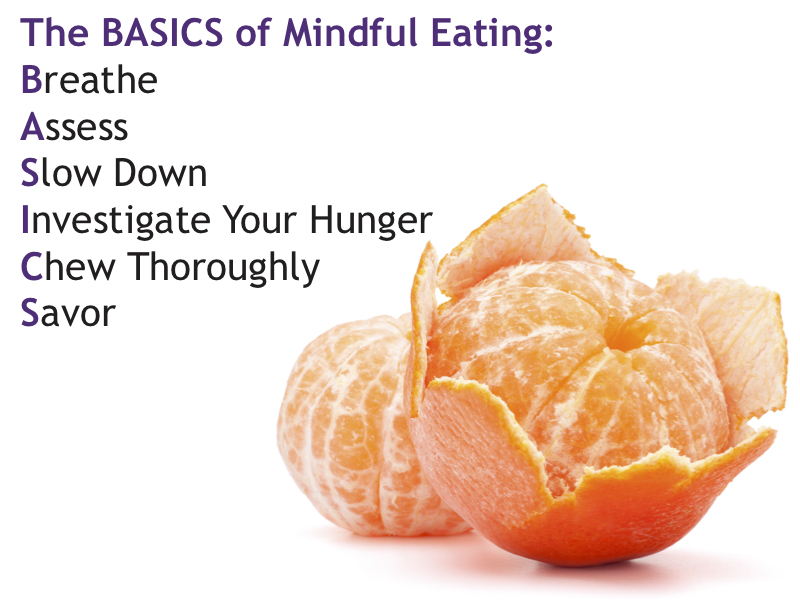14.5 The BASICS of Mindful Eating
A key characteristic of the instinctive eating pattern is mindful eating, also referred to as intuitive eating. Mindful eating has been shown to be effective at reducing:
- good versus bad thinking related to eating and food (Alberts, Thewissen, & Raes, 2012);
- body dissatisfaction (Alberts, Thewissen, & Raes, 2012);
- food cravings (Alberts, Mulkens, Smeets, & Thewissen, 2010; Alberts, Thewissen, & Raes, 2012);
- eating in response to emotional arousal or distress; and
- eating according to external cues or stimuli (Dalen, Smith, Shelley, Sloan, Leahigh, & Begay, 2010).

Listening to and trusting your body is a valuable skill to develop. Practicing mindful or intuitive eating helps us honor what our body needs by paying close attention to our appetite and satiety, rather than eating according to external cues like time, availability, visibility or taste, and can help us enjoy our food more, too. The practice of eating mindfully involves asking, “how hungry am I?” and “hungry for what?” as well as focusing on eating slowly, paying attention to each of the senses while eating, and stopping when full. To practice mindful eating, keep in mind the BASICS (Tasting Mindfulness, n.d.):
- Breathe and do a belly check for hunger and satiety before you eat. How hungry are you? What are you hungry for? Are you actually hungry at all? Consider whether you may be thirsty, tired, or stressed, rather than hungry.
- Assess your food with all of your senses. How does it look, smell, and taste? Notice its texture. Consider where it came from. What do you like—or not like—about it? Is it satisfying you?
- Slow down. Notice each bite and pause between bites.
- Investigate your hunger throughout the meal. Stay present to the food and to your body’s cues. Note that it’s OK—encouraged, in fact—to stop eating when you feel full or become disinterested in the food, or to get more food if you still feel hungry.
- Chew your food thoroughly.
- Savor your food. Enjoy the food and the experience of eating it.
Notice that the BASICS of mindful eating involve tuning in to your body and to the food itself. It’s the opposite of mindless eating. It means paying attention to what you’re eating while you’re eating it, as opposed to eating mindlessly while on-the-go, sitting in front of the TV or computer, or doing homework, for example.
Self-Assess Your Understanding
- What does the mindful eating acronym BASICS stand for?
- Describe some of the benefits of mindful eating.

